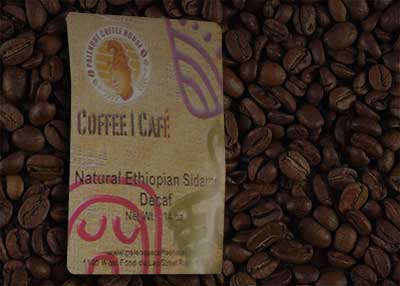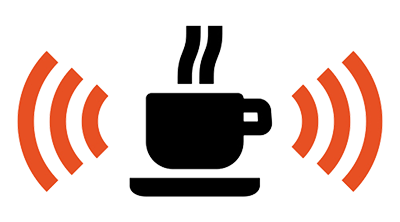Posted on Apr 23, 2012

What better place to start our examination of the single origin coffees of South America than in Brazil, the world’s largest producer of coffee? Much of Brazil’s coffee is dry processed (which means unwashed; the beans are handled by inspection rather than by washing), which is similar to much of the dry processed beans of Africa. So much has been written about Brazilian coffee that it could probably fill its own book. Here’s the condensed version, a list of coffees from Brazil you should keep your eyes peeled for: Santos: Divided into two types of beans, Bourbon and Flat bean, Santos coffee is from where else but Santos? Santos is actually a port where the original coffee plants were imported into Brazil. Bourbon Santos comes from beans that are collected during the first four years of the plants’ growth. This kind of coffee is considered very high quality for espresso blends. This is considered to be of superior quality to that of Flat bean Santos, which is collected after the fourth year in the plant’s life. Bean description: The main distinction between the two types of Santos beans is when they are collected; Santos of a younger maturity is generally a better quality coffee. If you are served “Santos” coffee in the future, you will know that there is a difference between the beans simply because of age. This is considered by many as the premium Brazil coffee. Cerrado: Like Bourbon Santos, Brazil Cerrado coffee is considered ideal for espresso blends, which means it has a lot of flavor potential if used the proper way – and espresso blending is indeed highly specific to each kind of coffee bean. The Cerrado growing region is actually quite dry (and vast), which makes for an ideal bean for this type of use. Bean description: The beans are not particularly anything out of the ordinary, which may help explain why they are often well-used for espresso than regular coffee: their flavor potential lies in pressure and heat and not just heat. Mogiana: Like Cerrado, Mogiana is an entire region of coffee growing in Brazil; it lies along the Sao Paulo and Minas Gerais borders. There is a lot of very nutrient-rich, reddish soil here that makes for interesting coffee and a high yield. Bean description: It varies, but the nutrient-rich soil often makes for healthy, hearty beans that are ideal for multiple blends if the person drinking the coffee is not too picky. Sul Minas: Like Mogiana, this is another large region of Brazil; some have called it the “heart” of Brazil’s coffee cultivation. There are a lot of hills here, which means higher elevations than much of the flatland across Brazil. Bean description: Higher altitudes means better Arabica beans, though this region isn’t particularly known for producing a higher quality of Arabica than anywhere else in the Western...
Read More »
Posted on Apr 19, 2012

Although South America is the top producer of coffee, it’s not easy to pick just any one continent from which the best coffee is produced. Yes, there are lots of great coffees in Brazil – you’ve just learned some of them – but this presents an incomplete picture of the world coffee market as a whole. Much of the coffee you buy in the supermarket is a multiple origin coffee, often blends including Robusta, Arabica, or in some cases a blend of each. In coffee makers of the lowest standards, it’s entirely possible that you could be buying coffee from two entirely different regions. The result, of course, is muddle flavor, conflicting acidity, and a body that is not representative of either type of coffee. In essence, if you don’t pay attention to the kind of coffee you buy on a regular basis, there’s a good chance that you could end up with coffee at its worst. In seeking out the best single origin coffees in the world, you’ve already expanded your knowledge so that you’ll be able to make more informed decisions the next time you go shopping for coffee or go to grab a quick cup of Joe from your local supermarket. Some advertisements will tell you that coffee comes from Columbia, or that it comes from Brazil. This is a great thing, of course, but you have to pay attention to what the marketers are not telling you: is the coffee from Brazil a Robusta multi-blend? There’s a reason you don’t always get the same cup of coffee you expect: they don’t always put what you’re not getting on the label. Our study of South America is a good time to point this out simply because so much of the coffee South America produces ends up in North American supermarkets. Note that just because a coffee comes from South America doesn’t necessarily mean that it’s what you want in your cup. Much of the coffee of Brazil, for example, is considered merely “drinkable” by some aficionados’...
Read More »
Posted on Apr 16, 2012

As you might imagine, the South American coffee landscape is one of high variance, high consistency, and what amounts to essentially a lot of coffee. It’s not easy to summarize an entire continent’s worth of coffee – especially when you’re talking about South America – but we can certainly gloss over some of the big names in coffee across South America. Arabica and Robusta: As mentioned, the two large categories of coffee are both cultivated to varying degrees in South America, which means that as a whole the entire continent is a little more versatile in its coffee offerings than is Central America, South America’s only land neighbor. Robusta coffees are often offered in multiple blends while the Arabica coffees are more likely to be offered in single origin coffees. Bourbon Santos: Named for the port of Santos in Brazil, Bourbon Santos comes from a rich history of Bourbon coffee in Brazil. In fact, this coffee was first introduced to Brazil back in the 19th century, when it was discovered that South America – specifically in Brazil – was well-suited for providing Bourbon coffee with a home. Santos is one of the chief single origin names in Bourbon coffees across the world. Bogota: This place in the eastern portion of Colombia is often paired with Bucaramanga, which is nearby. Much of the creamy, heavy body people associate with Colombian coffee actually comes from these eastern regions, which produce a coffee of low acidity and high flavor. In other words, this is the Colombian coffee of your dreams. Maracaibos Coffee: This is a category of Venezuelan coffees that includes a number of individual varieties like Trujillo, Tachira, and Merida. Like Colombian coffees, these come with rich flavor and acidity that is relatively mild, making it a favorite to anyone who enjoys low-acidity coffee (typically, these are people new to coffee). MAM: This acronym actually stands for Medellin, Armenia, and Manizales, which are Colombian coffees that set the standard for coffees not only in the country, but across perhaps the world. These are sometimes marketed as a package, so it’s good to be careful about finding single origin coffees from this region We’ll deal with each specific type of coffee in the MAM acronym later on in the chapter. Apurimac: This refers to a river in Peru where coffee is grown. Specifically, it is also grown in the Chanchamayo and Urubamba valleys nearby, which means that the premium Peru coffees tend to come from single origins near this river. This is just a brief overview of the types of coffee you can expect to see if you seek single origin coffees from South America: in other words, these are the heavy hitters not only in one continent, but deserve praise along coffees the world...
Read More »
Posted on Apr 12, 2012

To narrow down our knowledge of the top single origins for coffee in South America, we have to start big: we have to look at the individual top coffee-producing countries and give them a definition. Later, when you learn about single origin regions and towns, you’ll have the right context for where these coffees are grown and which characteristics they might expect to contain. Here are the top coffee-producing countries in South America that cracked the top 20 worldwide in 2010: Brazil. Producing about one coffee bean for every coffee bean that is produced across the world is not a small deal. Coffee is a big business, and Brazil is a big country that has matched its big potential by cultivating far and away the most coffee in recent years. It’s a big enough country to have a variety of climates and geological systems, but the highlands have plenty of coffee-producing power. Coffee is, in fact, the national beverage of Brazil. Brazil’s production is wide and varied, focusing on both Arabica and Robusta varieties. Much of the Brazilian terrain is actually too low in altitude for it to be considered “high-grade” as an Arabica producer, but the amount of land involved is still heavy and, therefore, significant. Colombia. The phrase “Colombian” is often followed by “coffee” in the United States, and for good reason: Colombia is situated in almost the perfect place to cultivate fragrant, richly-flavored beans. It has a stable climate thanks to its location near the oceans, it has enough high altitudes inland to support all types of cultivation, and even the soil seems to correspond well to coffee growing. Like much of Central America, Colombia focuses primarily on developing Arabica coffee. Peru. With the amount of coffee produced by Brazil and Colombia each year, it’s not hard to understand why a great coffee from Peru can often be overlooked. However, Peru’s coffee production is nothing to shake a stick at, and its high elevations can actually be quite ideal for the Arabica coffees that Peru focuses on so heavily. Venezuela. Venezuela’s coffee production has been overshadowed by its oil production in recent decades, which is why it’s easy to forget Venezuela’s role in coffee production in South America. But like Colombia, Venezuelan soil has a number of ideal characteristics (like proper acidity) for growing coffee. Much of the northern half of South America features land cultivated specifically for coffee production, which is why so many South American countries that don’t appear on this list also produce a lot of coffee. However, with the geographical prevalence (i.e., size) of the Amazon River and the rainforest, it’s important to also realize that not all of South American land is ideal for every type of coffee. Like in Africa, there are a multitude of climate and geological variations that mean different areas are better for growing better crops. Even...
Read More »
Posted on Apr 9, 2012

For most of the history of coffee, South America was not heavily involved in cultivating coffee. Much of coffee’s time was spent in Africa or the Middle East – it first went east toward southeast Asia before arriving in South America. And even when it arrived in South America, it took at least a century before it truly caught on to the proportions we’re familiar with today. So what explains the late blooming nature of South American coffee? There are a number of factors. The first: geopolitical factors. It wasn’t until within the past couple of centuries that South American countries started needing to cultivate their own resources to boost their own economies as they grew as a whole. In fact, it wasn’t until these recent centuries that coffee was even introduced to South America in the first place. But once it was, the coffee of varieties like Arabica and Bourbon took strong root throughout South America and adapted particularly well to the warm, consistent climates of South American highlands. South America is not as strict as Central America in producing only Arabica, however. Both Arabica and Robusta varieties of coffee are grown across the continent – which makes sense, given just how much space is available for growing coffee. Brazil by itself produces about one third of the world’s coffee output – you only need to look at a map and see Brazil’s raw size to understand its importance to the world coffee trade. South America’s climate tends to be both wet and hot. Humidity can be a good thing for coffee if it is consistent – which it tends to be in higher altitudes. Although many people think of northern South America as primarily lush rainforests, there are also a lot of mountainous and hilly areas – similar to Central America – that are perfect for growing...
Read More »
Posted on Apr 5, 2012

Nicaragua The rich and somewhat volcanic soil of Nicaragua provide a unique environment for coffee amongst the Central American countries, which is a subtlety that many coffee lovers are quick to forget. The wet processed beans of Nicaraguan coffee also have a lot more potential to live up to thanks to economic strife that has made it difficult to cultivate the beans in this area to their maximum abilities. Maragogype: Maragogype is technically a variety of coffee just as Caturra and Bourbon, but Nicaraguan Maragogype deserves special mention here because the variety seems so well-suited to the terrain and the altitudes of Nicaragua. Bean description: Another bean that is great for espresso, Maragogype is known as the “elephant bean” because it is very large compared to most coffee beans. Honduras Honduras coffees are typically wet processed and graded according to a number of factors, including: Strictly High grown, High grown, and Central Standard. Honduras borders Guatemala and thus enjoys many of the advantages Guatemala has in coffee growing. Interestingly enough, if you’re looking for single origin coffee blends from Starbucks, you’ll generally find them from nearby Guatemala, Costa Rica, and Colombia – not Honduras. But many people think Honduran coffee is on the...
Read More »






